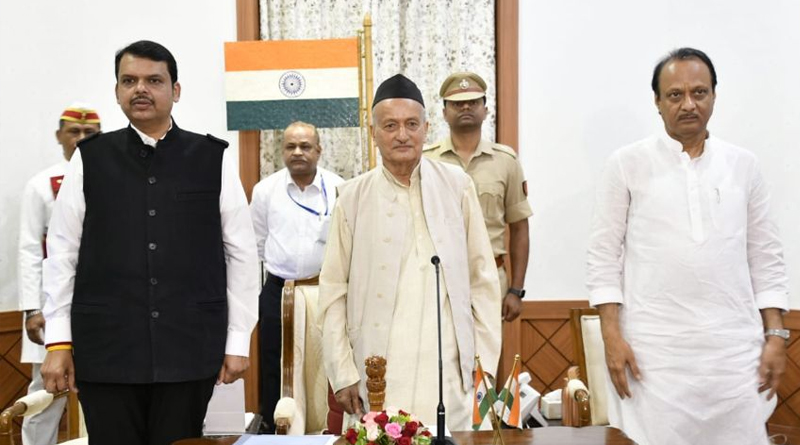Prime Minister Narendra Modi was elected in 2014 on an anti-corruption platform from which he told voters, “Main na khaoonga na khane doonga.” Translation: I will neither eat (take bribes) nor allow others to eat. After the scam-ridden years of UPA-2, that message resonated well with voters.
Alas, after post-election machinations in Maharashtra and Karnataka, many MLAs look very well fed, and those feeding them have a lot of food to distribute. Corruption at the very top may have diminished but is still alive and kicking at every other level. Modi’s personal reputation for integrity may remain strong, but not the BJP’s. Nor can he dissociate himself from the horse trading at the state level.
In the 2018 Karnataka state election, BJP fell short of majority but its leader B S Yediyurappa was sworn in as chief minister by a BJP-appointed governor who gave him weeks to “persuade” — Congressmen say “bribe” — opposition MLAs to defect. But the Supreme Court ordered a quick floor test. No defectors came and Yedyurappa had to resign. A JDS-Congress coalition government came to power. But then the BJP “persuaded” 17 MLAs of the Congress and JDS to resign, reducing that coalition to a minority. The price of those resignations is said to be mindboggling. Yediyurappa returned to power.
In Maharashtra, the BJP-Shiv Sena combine won the state election but then broke up. The Shiv Sena, NCP and Congress agreed on a coalition government. Suddenly the BJP persuaded Ajit Pawar of the NCP to become deputy chief minister in a new coalition, hoping to persuade other NCP members to join too.
The BJP government had earlier launched nine corruption cases relating to a Rs 70,000 crore irrigation scam against Pawar. These magically disappeared when he offered his hand. The governor swore in Devendra Fadnavis and Pawar as chief minister and deputy chief minister respectively, and ordered a floor test after a fortnight, giving them time to “persuade” others to join. Once again, the Supreme Court ordered a quick floor test, ending the purchasing game. In all these cases, political parties often herded their MLAs into a heavily guarded hotel or luxury resort to prevent them from selling themselves to other parties. This was an open confession of their own utter corruptibility.
Politics is the biggest business in India. Where does the money come from? Historically, it came from black money extorted by politicians. This time a new source was the electoral bonds introduced in 2017. Wealthy corporations and donors can buy transferable electoral bonds from scheduled banks and deposit these in the accounts of any political party within 15 days. This replaces black money with white, but keeps the names of donors secret, making the system opaque. Indeed, the State Bank of India is apparently able to trace even the names of the depositors, meaning that the ruling party alone will have access to the names.
The Reserve Bank of India and Election Commission both objected to electoral bonds, saying these would perpetuate big money in elections, help money laundering and make election finance opaque. These objections were dismissed. Indeed, special windows of time were opened in March, April and May 2018 to permit additional electoral bonds to be deposited before the 2018 Karnataka polls.
An RTI query revealed that 95% of all electoral bonds went to the BJP. Was this avalanche entirely voluntary or a “request that cannot be refused?” Businessmen are terrified of raids by the tax authorities, and know BJP has raided and arrested many opponents such as Sharad Pawar, P Chidambaram, Teesta Setalvad, and relatives of dissident election commissioner Ashok Lavasa.
Ordinary folk see no reduction of corruption in their daily lives. India is now 78th of 180 countries in the Corruption Perception Index of Transparency International, better than two decades ago. Nevertheless, one in every two citizens has paid a bribe in the last one year, says the India Corruption Survey 2019 conducted by LocalCircles and Transparency International.
The proportion of citizens confessing to paying a bribe rose from 45% in 2017 to 56% in 2018 and reduced somewhat to 51% in 2019. The main areas of bribery were in property and land registration (26%), police (19%), municipal corporation (13%), transport office (13%) and tax department (8%). The number of people saying bribes were the only way to get work done increased from 36% last year to 38% this year. Those paying “speed money” increased from 22% to 26%.
In sum, although India has a bad ranking in the International Hunger Index, politicians and bureaucrats look very well fed and hungry only for power. Memories of Congress corruption will not fade easily, but the BJP is rapidly getting “Congressised”.


